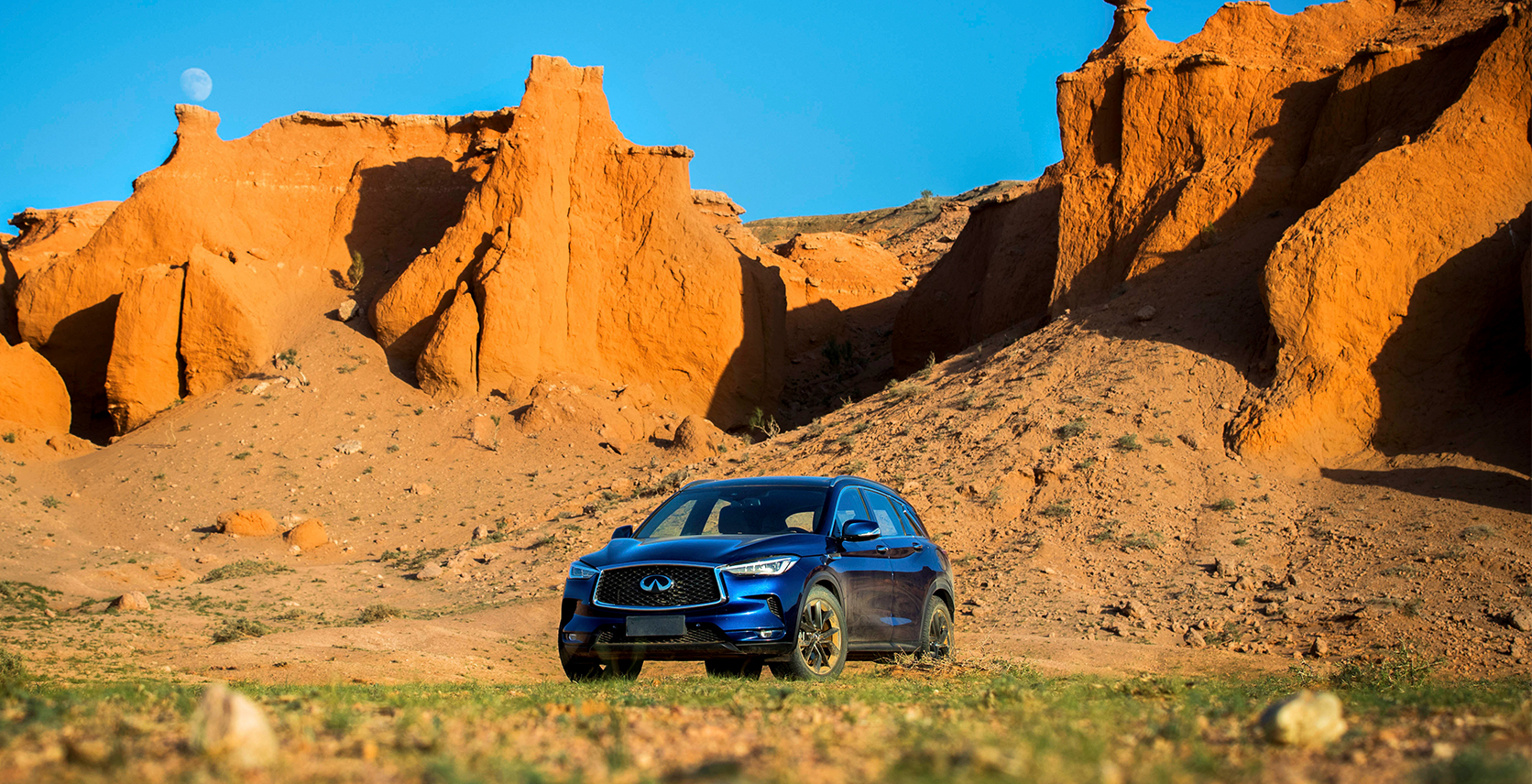Infiniti and Beyond: Crossing the Endless Gobi Desert in Search of Dinosaurs
The Gobi is a hard place to live. Stretching across all of southern Mongolia and into northern China, the desert is a place where few people even try. Scorching hot summers and brutally cold winters mean very little can grow; water is scarce; infrastructure is makeshift almost everywhere.
It wasn’t always like this.
Eighty million years ago, the endless plains of the Gobi were more populated than they are today, and much more livable. At the height of the Upper Cretaceous period, giant creatures roamed the land, feasting on abundant local fauna and bathing in natural ponds. The Protoceratops, small and horned, proliferated near the riverbeds; the Tarbosaurus, a distant relative of Tyrannosaurus rex, ruled the area on two legs, with 60 razor-sharp teeth. Those dinosaurs reigned for some 15 million years. And if you know where to look, you’ll find that, miraculously, many of them are still there.
This is what brought us to the furthest reaches of lower Mongolia, traipsing through the sand under the unthinkable heat, panning the desert for remnants of a long-lost world. While many of the world’s great paleontological sites have been thoroughly mined for their buried treasure — Alberta’s badlands, Hell Creek in Montana, Neuquén Province in Argentina — Mongolia remains a relatively untapped resource.
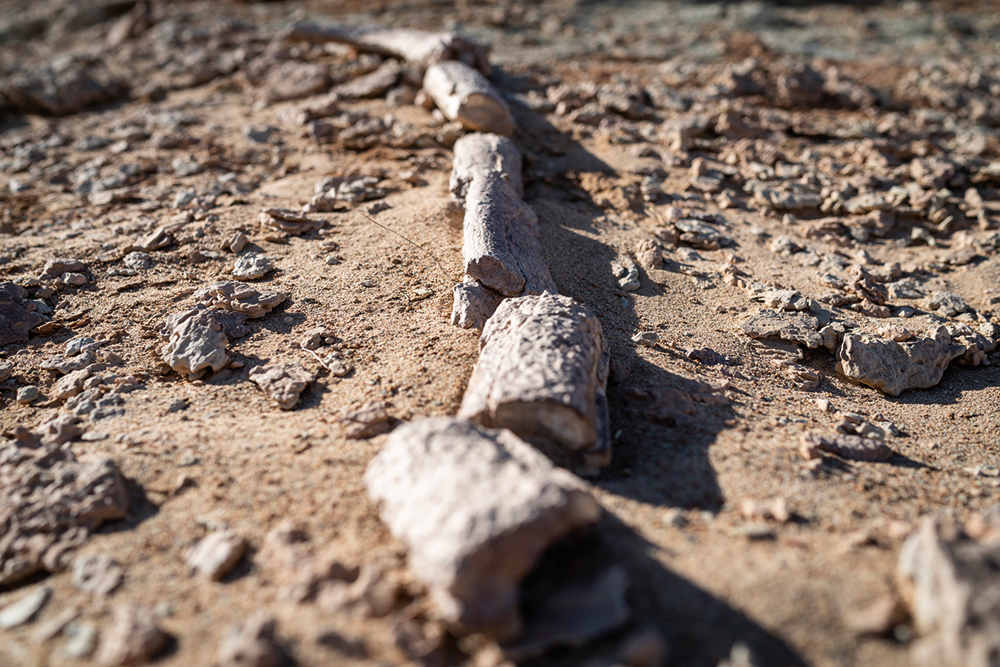
While there are several geological reasons for this fossil bounty — including the lack of infrastructure and a relative shortage of funding for Mongolia’s small national paleontology program — much of it has to do with just how remote the region really is. From the capital of Ulaanbaatar, we took a two-hour flight to the Gobi’s main airstrip at Dalanzadgad. From there, it was an hour-long trek by car across tenuous dirt roads to our base at Three Camel Lodge. And from there, another hour into the sand towards the fossil deposits.
Luckily, it was a relatively comfortable ride. We were here with Infiniti, which had somewhat incongruously planted a fleet of its luxury SUVs onto the rocky steppe: two mammoth QX80s, two QX60s, and two of its latest and smallest utility vehicles, the remarkably capable QX50, which boasts the world’s first variable-compression-ratio engine.
The plan was to retrace the route of the latest Infiniti-sponsored expedition, which set out from Ulaanbaatar in June of this year, and which itself retraced the routes of the region’s first major expeditions in the 1920s, led by the legendary Roy Chapman Andrews — a naturalist and, later, director of the American Museum of Natural History in New York (and also, for what it’s worth, the man thought to be the inspiration for the character of Indiana Jones).
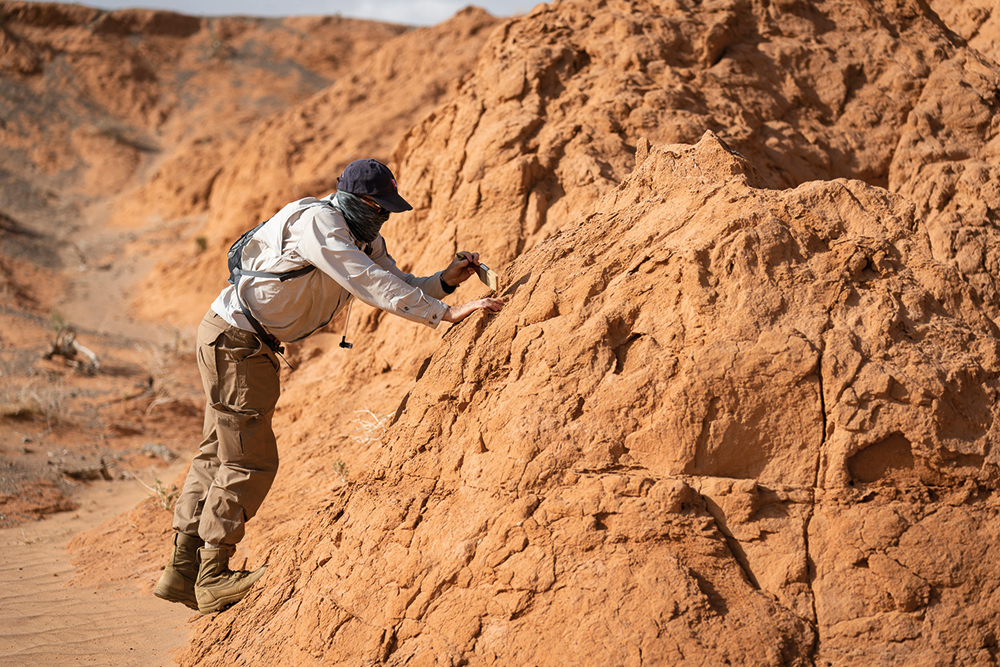
Andrews’ mission was extraordinary, and not just for the sheer difficulty of mounting it. He was an original member of the Explorers Club, devoted to scientific field studies, and carried one of the first flag missions to this remote part of the world. On his original expeditions, he and his team unearthed dozens of important specimens — including the world’s first examples of fossilized dinosaur eggs, which a team member quite literally stumbled upon after tumbling down a rock face that came to be known as the Flaming Cliffs — a shocking red outcropping in the otherwise dead flat plain. The team also provided the first topographical maps of the area. And to cart all the bones home, Andrews’ expedition was the first paleontological mission to use motorized vehicles, making the trek through the desert slightly (and only slightly) less onerous.
Almost 100 years later, the 20-day Infiniti expedition brought 35 paleontologists, cartographers, explorers, and technicians to the remote region, with a shared mission of rewriting what is known about the dinosaurs that once called it home. They employed satellite and drone imaging technology to map the vast area, working with multi-spectral and thermal cameras to collect previously unthinkable data over thousands of square kilometres. Altogether, the team unearthed hundreds of new fossil sites, rare egg fossils, the largest-ever Tarbosaurus tooth, and potentially three entirely new species of dinosaur.
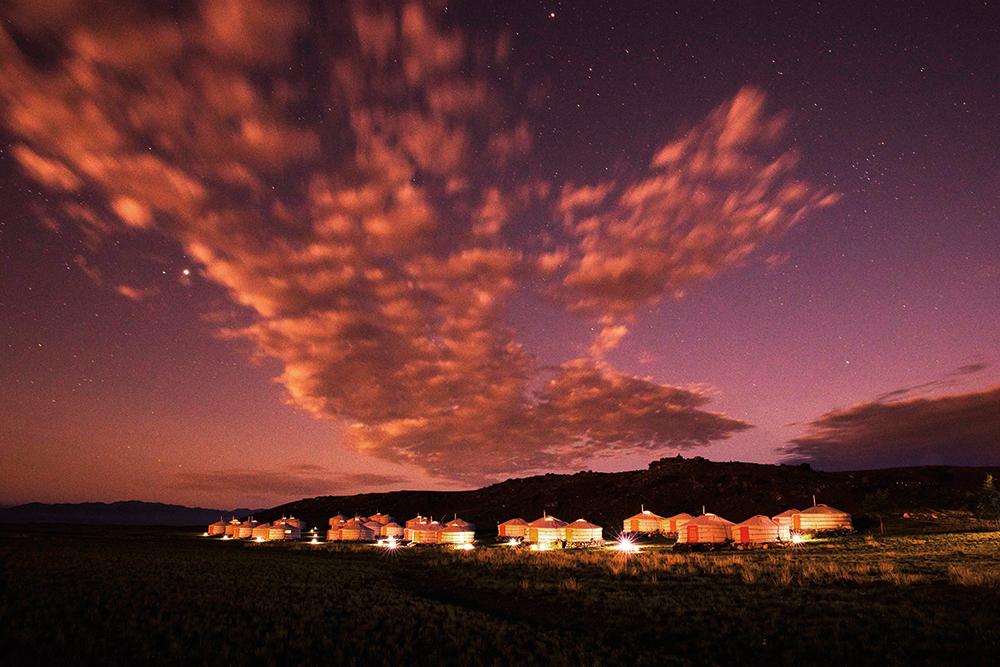
“Personally, I found those 3-D maps were the biggest thing,” says Dr. Badamkhatan Zorigt (or Badmaa, as we’ve come to know him), Head of the Division of Vertebrate Paleontology at the Institute of Paleontology and Geology, Mongolian Academy of Sciences and the de facto leader of our band.
Born in Ulaanbaatar and trained in Montana, Badmaa is an expert on Mongolian species, and as knowledgeable and passionate a guide as you could ask for. And even he’s impressed by the diversity and abundance of fossils left in the Gobi’s sands. “We continue looking for fossils so that we can research individual variation. I have a brother who is very tall, but I am very short. Genes can vary. We want to study that in dinosaurs, to have a fuller picture of what they were like.”
We left our dust-covered Infiniti SUV on flat land and followed Badmaa on foot to where he suspected we might find dinosaur remains. Strong rains — unusual for the typically dry summer months — had washed off top layers of sand and sediment over the past few weeks. There was still much to be discovered.
And sure enough, within minutes we’d uncovered the unmistakable ivory form of a tooth. And a few feet over, a rib bone. Hundreds of bone fragments scattered across the desert floor like tiny puzzle pieces. A little further up, an entire skull, found during the June expedition, sat half-emerged, awaiting a team from the city to dig it out, plaster it, and bring it back to the lab.
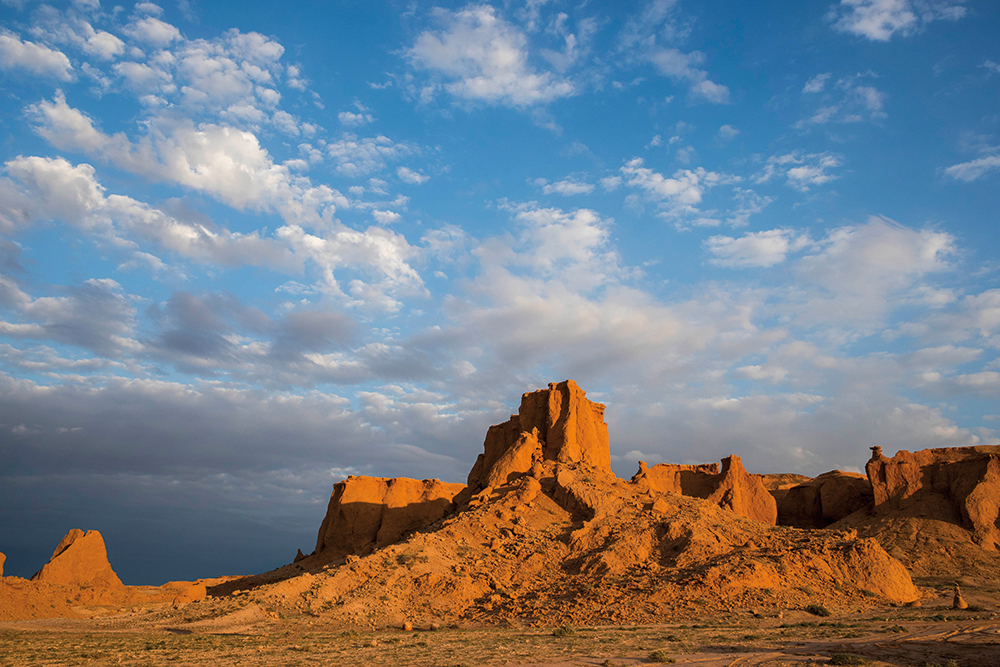
Later that evening, we convened for a cocktail at the foot of the Flaming Cliffs. The Three Camel Lodge had brought its top-shelf spirits and zealous young bartender out into the field. A group of us strolled, gin-and-tonics in hand, aimlessly taking in the view. Then someone stumbled over a rock — not unlike that fateful moment on the Andrews expedition — and as the dust settled we saw a tiny rib cage, almost fully formed, almost 80 million years old. Badmaa rushed over and took its measurements, marked its place on his GPS, and covered it for a later expedition. He was beaming.
As we loaded ourselves back into the Infinitis, it was easy to conjure the Andrews expedition, moving across the rocky desert in its own fleet of vehicles, heading back towards the city having encountered first-hand a long-lost world. What an unimaginable luxury.
